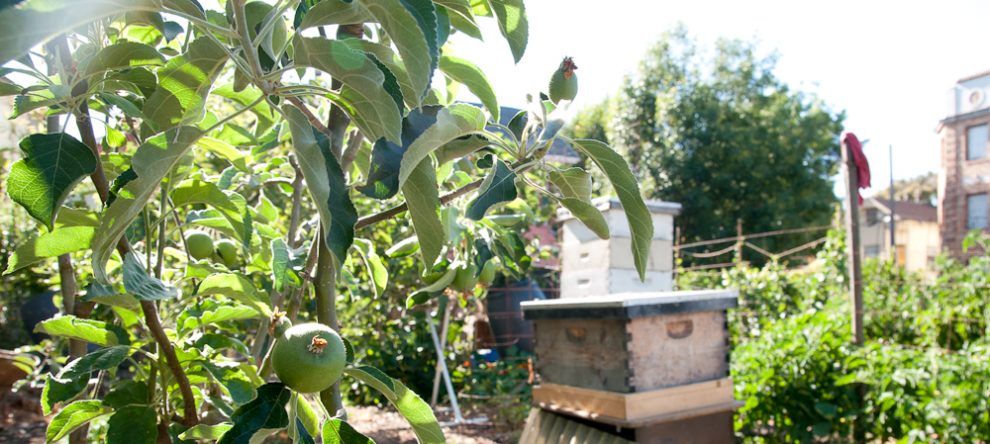I have a new respect for leather. Last weekend it took all of my strength and the strength of ten other people to tan three buckskins and a couple of rabbit furs.
We were learning, sure, but to make a single buckskin in a natural way is an incredibly intense–physically and mentally–exercise. We were lucky to have the expertise of Tamara Wilder, a primitive skills master who has been making buckskin and teaching wilderness skills for the past twenty years.

Tamara, pictured here with a student, brought all the poles and beams we needed to scrap the hides clean. She also brought three hides for us to tan–two deer and one goat. It’s her side gig to skin deer for hunters during hunting season so she collects a lot of them. She merely salts the hides, folds them up, and then puts them into a large plastic box in a shady spot. When she has time–usually in the winter–she’ll take them out and start the hide tanning process.
Though two of the hides were almost three years old, they hardly smelled at all. Our first order of business was to scrape off all the muscle tissue and fat off the hides. We donned long plastic aprons, set up scrapping beams, and went to work. We used dull blades and elbow grease to work off the tissue. At some points, it was gross.
Then we flipped the hides over and started scrapping the fur side off. Tamara pointed out that this is the time when most mistakes happens. There’s a membrane that must be removed with the hair. If it doesn’t get removed, it will never be soft and supple buckskin. This requires a hefty amount of upper arm strength. And in my case, grunting. Every once in awhile we would pour water over the hide to keep it moist.
That first step took almost all day. Those of us who opted to make a bunny fur, also had to scrap the muscle and fat off a rabbit hide which had been soaked in an alum and salt solution overnight (this sets the fur so it doesn’t slip).
Next, Tamara showed us how to properly remove a brain to do the brain tanning solution. We also added about a dozen egg yolks and blended it all up. The scrapped hides and furs went into the brain bucket overnight. We all limped home and licked our wounds.
The next day, we were up early, setting up pieces of thick wire along the fence posts at GhostTown Farm. The neighbors were very curious. We spent the rest of the day fussing with the brain-infused hides. We pulled them, and stretched them, and roughed them up on the wires. Then pulled them some more. The bunny furs were prodded and stretched. After many hours, the hides started to feel really soft and pliable. They could be tugged on. They turned a wonderful white color and were soft as felt. We had made buckskin.
Then Tamara (who was wearing a buckskin tank top and had made a pair of buckskin hot pants!) started a fire with a stick. We all nearly gasped at her genius. We then smoked the buckskin, which makes it waterproof, and turned it a dun color that I’ve only associated with buckskin wearing natives.
By that second day, we were all exhausted, stretched to the limit, giddy with our new knowledge. Tamara divided up the buckskin–each of us got a quarter of a hide–and we all wondered what we would make with ours. I think I have enough to make a bikini top.
Also, tonight i’ll be at:
CounterPULSE, 1310 Mission St., San Francisco, CA 9410
Wednesday, April 29, 2009
7:30pm
I’ll be one of five speakers discussing “transitioning into sustainable urban living.”


